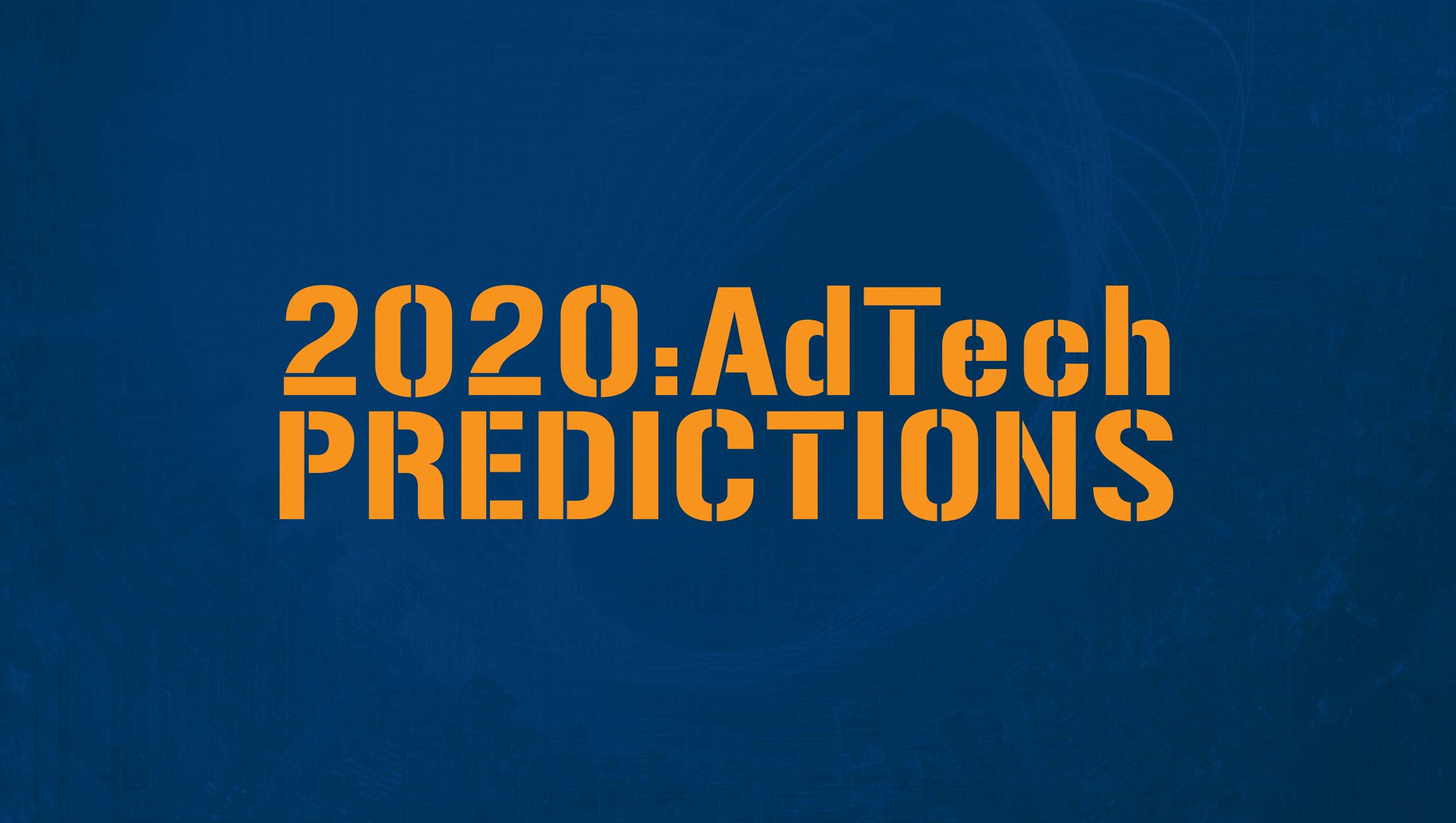The digital advertising technology (AdTech) industry has recorded another blazing year in spending and product launches throughout 2019. The AdTech space is expected to continue with its pace of innovation and dynamic market expansion in 2020. The AdTech market is expected to grow exponentially for the next 3-4 years, even as new data governance and consumer data privacy laws come into effect.
From AI to Identity Management, AdTech technologies are redefining what it means to be modern digital marketing and advertising platform.
We’d identified leading industry experts who provide their 2020 AdTech Predictions. Here are the predictions.
Sergio Serra, Senior Product Manager of Supply and Programmatic at InMobi
Possible Disruptions in the DSP Ecosystem
DSPs need to build support for the new specifications, so some investment is needed from their end. The actual challenges I see are more on the SSPs’ side. Historically, some SSPs have not been transparent and the lack of adoption from all of them might slow down this whole migration to a more transparent ecosystem.
However, the good news is that such players will eventually need to adopt the new specifications or will be pushed out of the business.
The Future of Supply Path Optimization (or SPO)
I do not think SPO will ever go away as a topic and honestly, this would mean for the ecosystem to expose itself to new risks.
I like to think all the initiatives we have been working on along with Interactive Advertising Bureau (IAB) will lead to a world where SPO will simply be taken for granted and each buyer will have full visibility into the supply chain and be able to take educated calls on where to allocate budgets.
Martech-AdTech Integration for Media Buying Customers
One of the areas we’re most excited about is the application of InMobi Pulse data in the media buying process.
InMobi Pulse builds a holistic understanding of consumers across data sources ranging from the InMobi ad exchange, which reaches 1.6 billion users globally, to permissively-sourced deterministic first-party carrier data (stemming from our 2018 acquisition of Pinsight Media) to stated feedback directly from the customers.
We’re already seeing great results from leading brands using the insights gleaned from InMobi Pulse to more effectively understand, identify, engage and acquire their target consumers.
Potential Roadblocks for Content Owners, Publishers, and Advertisers
Transparency is still the common point of concern for all the stakeholders. With specific focus on in-app, we do see some additional challenges mostly related to the absence of cookies and a lack of knowledge on how to use viewability tags compared to desktop.
Oz Etzioni, CEO of Clinch
2019 Was the Race for Data. Now, Brands Need to Figure out How to Optimize the Data They Have and Execute on It.
You need to have a continuous understanding and communication between brand & consumer. In order to achieve this, brands need to break their silos, start building a customer experience hub to connect 1st and 3rd party data, and execute across all channels.
This Is the Evolution of Retail, Not the Apocalypse.
The way we purchase, as consumers, is changing. Retail tends to stay the same way. There will be a lot more closings in 2020- those that survive will be the ones innovating to stay relevant with the changing consumer.
Look Outside Retail for Upcoming Retail Trends.
QSR Brands like McDonalds, and automotive brands, are leading the way in creating personalized, omnichannel experiences. We can expect to see these trends further solidify in the retail space next year.
Andre Swanston, CEO and Founder of Tru Optik
M&A 2.0: Data and Identity
As 2019 saw the most merger and acquisition (M&A) activity by strategics with content acquisitions, 2020 will see a bigger uptick with data and identity solutions being acquired to leverage and monetize the investment companies already made the year prior.
Streaming Audio is the New CTV
The amount of weekly listeners and consumer listening hours on streaming audio will surpass terrestrial radio. Podcasts and smart speakers are becoming the norm. This shift has massive ramifications for advertisers as they look to navigate the new digital, audio world
Gaming: Reaching the Unreachables
Advertising in video games will be a huge opportunity in 2020 for advertisers to reach the unreachables. The average gamer has an ad blocker, is not using Facebook, doesn’t watch linear television. Reaching a wide desirable diverse audience of millennials, GenZ’ers and GenX’ers, who were part of the video game boom, can be found playing video games and interacting with relevant advertisements.
There’s Always an Audience for FREE. Don’t be Afraid of Disney+ and Apple TV+ (unless you are Netflix).
With new entrants to the streaming wars, Netflix will survive 2020 but it won’t be the same company it was when it launched in 2007. Netflix will need to offer a cheaper, ad-supported tier.
While Netflix has cause for concern, free OTT services will not only survive, they will thrive as consumers look to supplement pay connected TV with free options.
Saurabh Bhatia, CEO at Chocolate Platform
The most significant trends, which shall continue to shape the future, I would say they are:
a. 100% Viewability Measurement
b. Fraud Detection
c. vCPM (Viewable CPM)
d. In-App Ad Measurements/SDKs
e. Improvements in eCPM by Yield Optimization
f. Improving Render Rate and Reducing Latency
Kerel Cooper, SVP Global Marketing at LiveIntent
More Retail Brands Will Challenge Amazon
Nike recently announced they were pulling their products from Amazon. Nike was able to do this because their purchase of Celect, which allowed Nike to bring personalization to their own properties. Amazon used to have the advantage here, since you would have to log in to Amazon to peruse products, and then products would be shown to the user on a person-by-person level. However, brands are getting smarter about leveraging the vast first-party data they have and creating identity graphs that deliver the ability to personalize ads.
Now, there’s now less need for a brand to hand over inventory to Amazon, and brands like Target, Wal-Mart and Kroger are even thinking about monetizing their own online digital inventory like a news publisher does.
Ad-Tech Teams and Mar-Tech Teams Are Finally Working Together
Analysts have for years predicted that adtech and martech teams would work together, and 2020 will finally be the year that happens. The death of the third-party cookie means that the teams tasked with launching a wide net to find new customers (advertising) will have to turn to those teams with expertise in handling channels where the user is known and a relationship has been established (marketing) in order to forge a path forward.
Expect more advertisers to leverage technologies that “resolve” unknown audiences to known audiences (via identity graphs and better first-party data in the bidstream for programmatic efforts), and expect more Publishers to adopt technology that resolves previously anonymous site visitors into known people, thus driving up the value of their inventory.
Peter Bordes, CEO, Kubient
Back to Basics. Premium Programmatic Buying on Open-Trading Platforms.
Silos will open up, fragmentation will dissipated and programmatic will move towards its original mission to provide an open trading platform for buyers and sellers of advertising.
DOOH.
Many don’t understand the impact DOOH will have. All of the features that are currently available on display, mobile and web with retargeting will be available in real-time on DOOH
Expect to see more targeting, more infrastructure and more open trading
Fear Factor: The Industry Is Cannibalizing Themselves.
There is way too much fragmentation and too many siloes. Aggregation is currently happening and will only continue to as advertisers/media companies are understanding they need a full stack solution.
2020 will bring consolidations and M&A to the overall adtech industry – or many companies will be weeded out.
Ad Fraud.
The Ad Fraud measurement model is flawed. For example, a recent report only measured a portion of the traffic, so fraud numbers are likely higher than they are purported to be.
Fraud prevention shouldn’t be an add-on, it should be baked into the platform’s advertisers use. Right now, advertisers only measure a portion of their traffic, or identify fraud retroactively when it’s too late.
Michal Borkowski, co-founder and CEO of Brainly
Mobile will Drive the Conversation When Marketing to Gen Z.
Gen Z consumes content on mobile more than any other generation. Brands need to be on mobile with them in order to effectively target Gen Z
Brands Not Getting It Right will Be Called Out.
If brands are going to take a stance (think, Nike’s support of Colin Kaepernick) they need to have the values to back it up.
Gen Z Is Obsessed With Creating Content. Anyplace, and Anytime.
They will continue to do this, and rally around brands and causes that they see fit. This is an opportunity for brands to leverage loyalty.
Aman Sareen, CEO of ZypMedia
M&A: Simplifying the Local Media Experience
M&A activity is only going to increase in 2020. Instead of content acquisitions, consolidation will continue with purchases of local TV, radio, and media companies to increase buying leverage and better economies of scale offering the ability to better control and manage their media buying margin off their O&O properties. Additionally by reducing the number of digital/adtech vendor count and thereby simplifying processes, workflow, invoicing and reporting.
Local Advertisers Increasing Their Use of OTT.
The future of local advertising is digital and programmatic. Local advertisers must adapt and accelerate their transition from traditional media to OTT and CTV advertising. In order to meet this demand, local advertisers will have to increase their use of OTT and leverage their local audience first party data to discover shifting local audiences as well as supplement their linear campaigns.
Development of New Technology/Products for Local Advertisers.
In 2020, we’ll see a continued effort from local media companies to develop and rollout new products for their existing sales force to sell. Consumers love free local content and in order to stay engaged and competitive in the face of increasing pressure from the likes of Google, Facebook, and even Amazon, local media companies should consider roll out local focused OTT apps for their unique content especially around news and sports.
Increase the Efficiency of Their Spend With Campaign Analytics.
Since local ad budgets are often smaller, local advertisers are more sensitive to waste, whether that be frequency of the same ads or reaching undesirable audiences, and their reach is often targeted to consumers near their locations. Utilizing mid or inflight campaign analytics provides insights for advertisers to make adjustments and improvements of effectiveness and spend on campaigns.
Some local advertisers are not digitally sophisticated and with better optimization on campaign reporting can lead to better measurement and attribution on desired outcomes such as did that consumer visit my location after seeing the ad.
To participate, write to us at news@martechseries-67ee47.ingress-bonde.easywp.com











